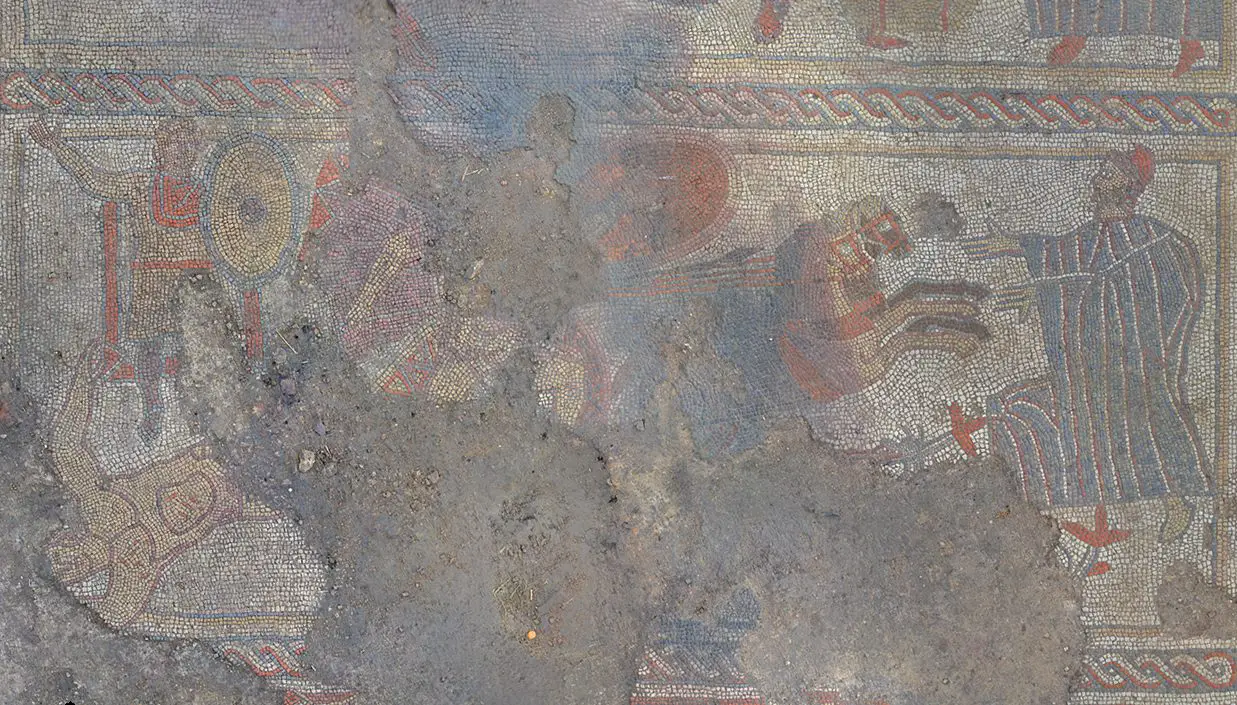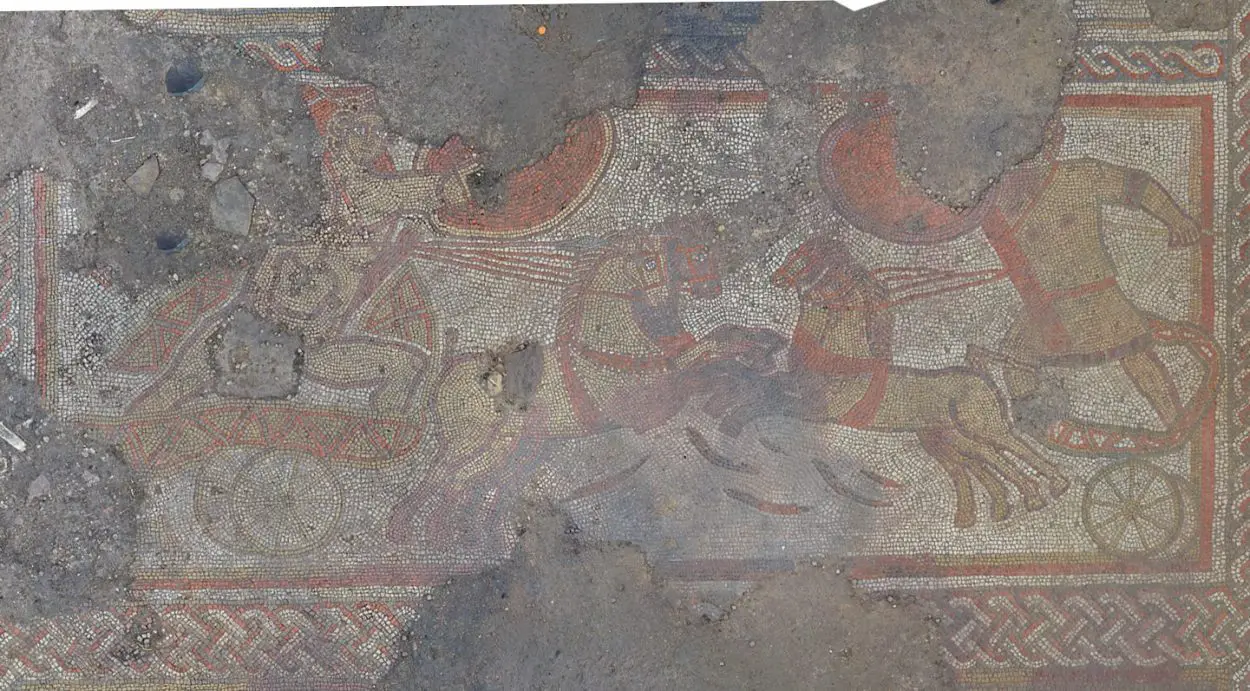Archaeologists excavating an elaborate Roman villa complex have uncovered a rare mosaic depicting scenes from Homer’s Iliad.
Excavations were conducted by the University of Leicester working in partnership with Historic England after the site was discovered by the landowner’s son, who identified archaeological remains disturbed by ploughing and agricultural activities during the lockdown in 2020 as a result of the COVID-19 pandemic.
The farmer contacted the heritage advisors to Leicestershire County Council, in which funding was secured to investigate the site by the University of Leicester Archaeological Services (ULAS).
The University of Leicester’s School of Archaeology and Ancient History examined the site in September 2021, revealing the remains of a mosaic that measures 11m by almost 7m and depicts the story of the legendary hero Achilles from the Iliad and his battle with the Trojan Prince Hector.


The Iliad, also referred to as the Song of Ilion, is an ancient Greek poem in dactylic hexameter, traditionally attributed to the author and poet Homer. The Iliad is set during the Trojan War, where a coalition of Mycenaean Greek kingdoms led by King Agamemnon lays siege to the city of Troy. The Iliad is among the oldest extant works of Western literature, and tells of the quarrels between Agamemnon and Achilles.
The artwork forms the floor of what is thought to be a dining area in a large villa building, occupied during the 3rd and 4th century AD in the late Roman period. A geophysical study and further archaeological evaluations have identified several supporting buildings, including what appears to be aisled barns, a possible bath house, circular structures and a series of boundary ditches.
Fire damage and breaks in the mosaic suggests that the site was later re-purposed during the very late Roman or Early Medieval period, with the discovery of human remains in the rubble covering the mosaic after the building was no longer occupied.

John Thomas, Deputy Director of the University of Leicester Archaeological Services (ULAS) said: “This is certainly the most exciting Roman mosaic discovery in the UK in the last Century. It gives us fresh perspectives on the attitudes of people at the time, their links to classical literature, and it also tells us an enormous amount about the individual who commissioned this piece. This is someone with a knowledge of the classics, who had the money to commission a piece of such detail, and it’s the very first depiction of these stories that we’ve ever found in Britain.
“The fact that we have the wider context of the surrounding complex is also hugely significant, because previous excavations on Roman villas have only been able to capture partial pictures of settlement like these, but this appears to be a very well-preserved example of a villa in its entirety” added Thomas.

The villa complex has been protected as a Scheduled Monument by DCMS on the advice of Historic England and has been backfilled to protect the archaeology in situ. Historic England is working with the landowner to support the reversion of these fields to a sustainable grassland and pasture use, with plans for further excavations of the site in 2022.
Header Image Credit : University of Leicester Archaeological Services





